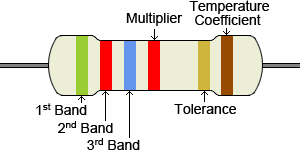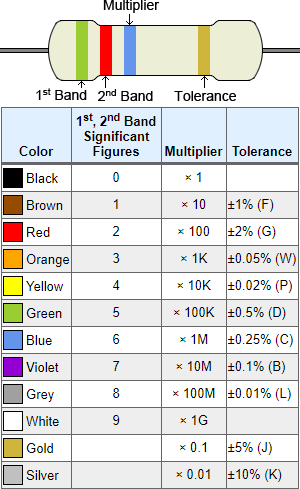

Try this out by using our Resistor Color Code Calculator or you can check it with the 5-band resistor color code chart below. So this is a 150×1000=150 000-ohm (or 150K ohm) resistor with a 2% tolerance. Let’s say we have a 5-band resistor with the following color codes: brown, green, black, orange, red. 5-band resistor color code chart COLOR CODE The exact meaning of each color codes for the 5-band resistors is given in the chart below. The first three color bands represent significant digits, the fourth band represents the decimal multiplier, and the fifth band represents the tolerance. If you want to decode a 5-band resistor, start reading it from left to right.
2 ohm resistor color code how to#
How to read a 5-band resistor color code? Try this out by using our Resistor Color Code Calculator or you can check it with the 4-band resistor color code chart below. So this is a 10×10=100-ohm resistor with a 1% tolerance. Let’s say we have a 4-band resistor with the following color codes: brown, black, brown, black. 4-band resistor color code chart COLOR CODE

The exact meaning of each color codes for the 4-band resistors is given in the chart below. Start reading the 4-band resistor from left to right, the first two color bands represent significant digits, the third band represents the decimal multiplier, and the fourth band represents the tolerance. How to read a 4-band resistor color code? You also can download our Resistor Color Code Reading Guide. If you one to know more about resistor color codes, resistor e-series standards, etc, you can find detailed information below. The Resistor Color Code Calculator immediately shows the resistor values. First, choose the correct number of bands then setup the band colours by clicking on the virtual resistor bands. The Resistor Color Code Calculator is capable of reading 4-band, 5-band and 6-band resistors. How to use the Resistor Color Code Calculator?


 0 kommentar(er)
0 kommentar(er)
